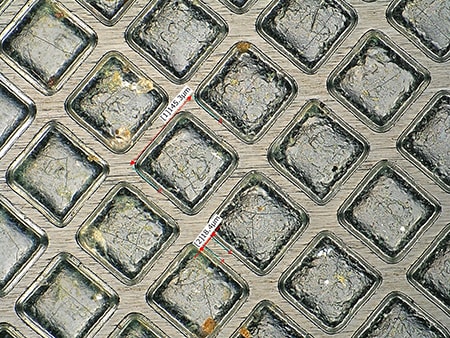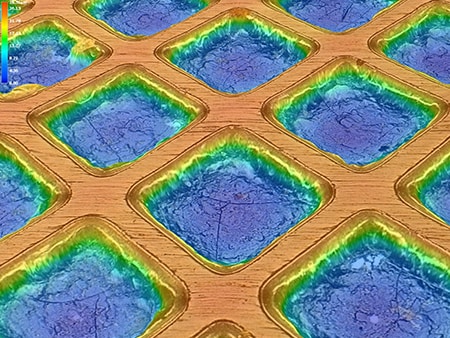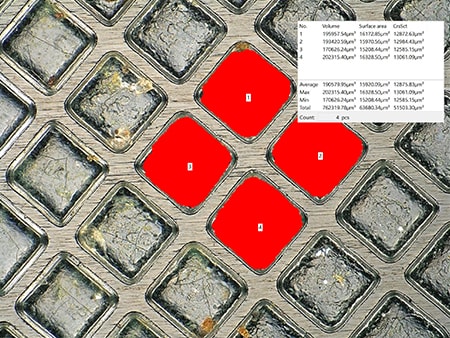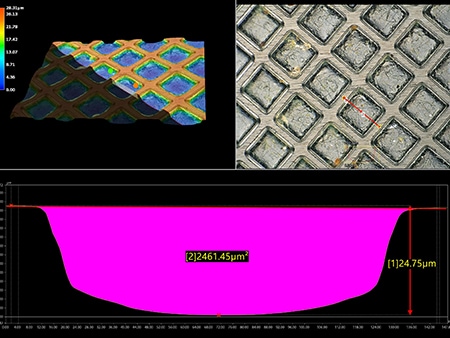Image Capture and Analysis of Rotogravure Using a Digital Microscope
We encounter printing everywhere, on food and medicine packages, books, magazines, and many other items.
This section introduces examples of image capture and analysis of rotogravure using our digital microscope.
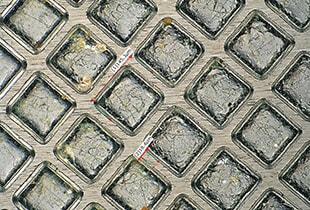
- What Is Rotogravure? (Suitable for Reproducing Photographs)
- Examples of Image Capture and Analysis of Rotogravure Using a Digital Microscope
What Is Rotogravure? (Suitable for Reproducing Photographs)
Rotogravure is a representative form of intaglio printing. A plate on which characters and pictures are engraved is called an intaglio plate.
Characters and pictures are printed by applying ink to recessed surfaces (cells) and then the ink is transferred to paper. This method is often used for printing photo books and product packages because it reproduces depth of colour well.
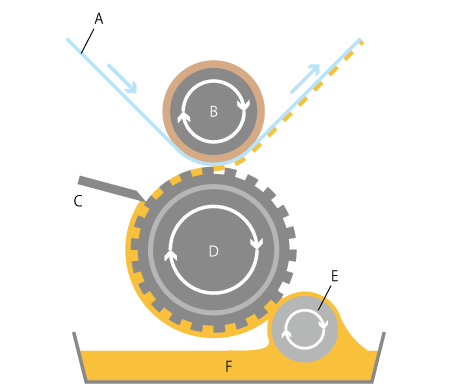
- A: Printing paper
- B: Impression cylinder
- C: Doctor blade
- D: Plate
- E: Furnisher roller
- F: Ink
Ink is applied to the plate via the furnisher roller and removed from non-printing areas (non-recessed surfaces) by scraping with the doctor blade. The ink is transferred from the cells to paper between the impression cylinder (impression roller) and the plate (rotogravure cylinder). After drying, the printed paper is rolled up.
Characters and pictures are incised on the plate, which has an iron core plated with copper, by engraving or etching and then the plate is plated with chrome to enhance the durability.
Roll-type paper (rolled paper) is used for printing, which is rolled up again after printing.
Colour gradation is adjusted with the depth and shape of recessed surfaces (cells). This can change the ink transfer amount drastically, so rotogravure is excellent for reproducing subtle gradations.
Additionally, once preparation is completed and printing starts, printing tends to be stable because there are few factors that can affect the printing. The plates are durable, making this process suitable for high-volume production. The cost of plate creation is relatively high however, so rotogravure can be unprofitable unless large volumes are being printed, such as for magazines.
Examples of Image Capture and Analysis of Rotogravure Using a Digital Microscope
This section introduces the latest examples of image capture and analysis images of rotogravure using KEYENCE’s VHX Series 4K digital microscope.
